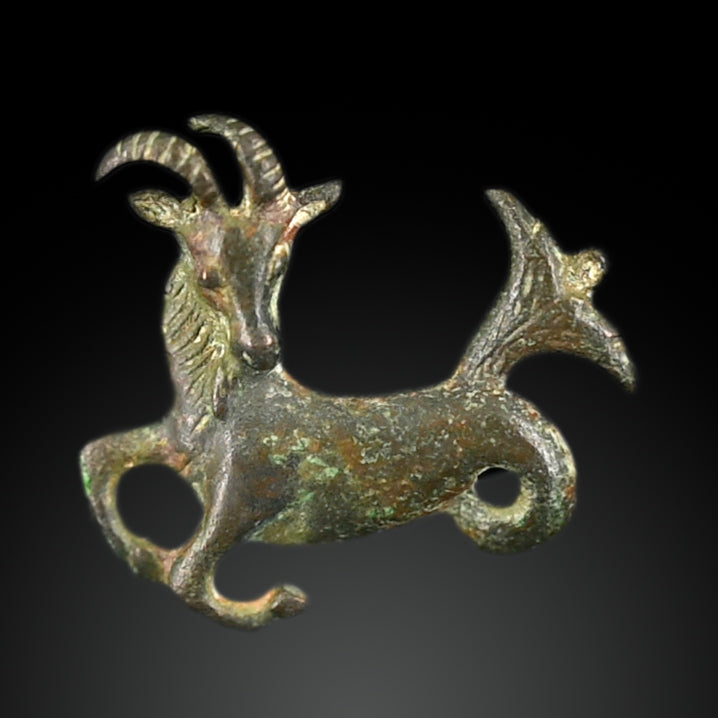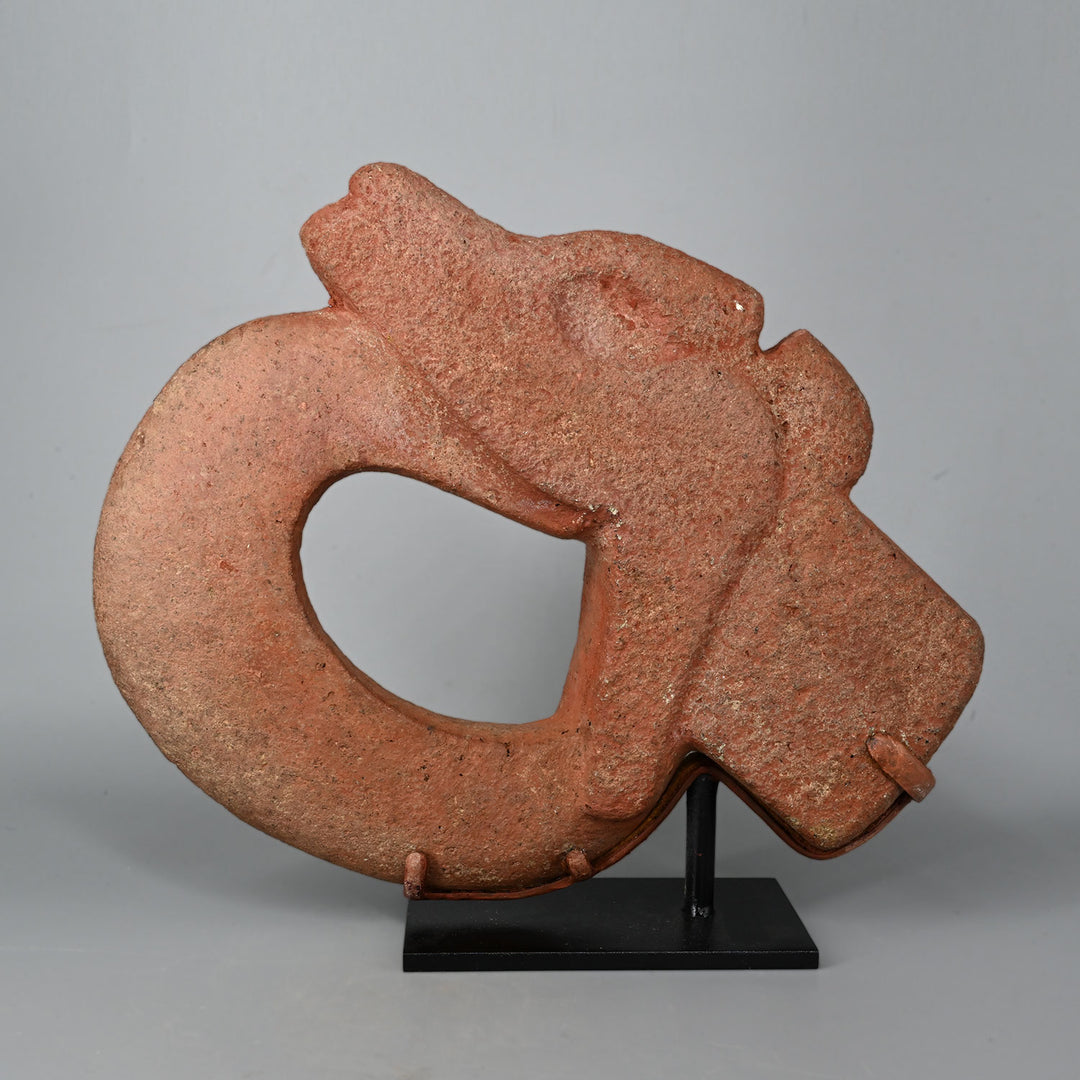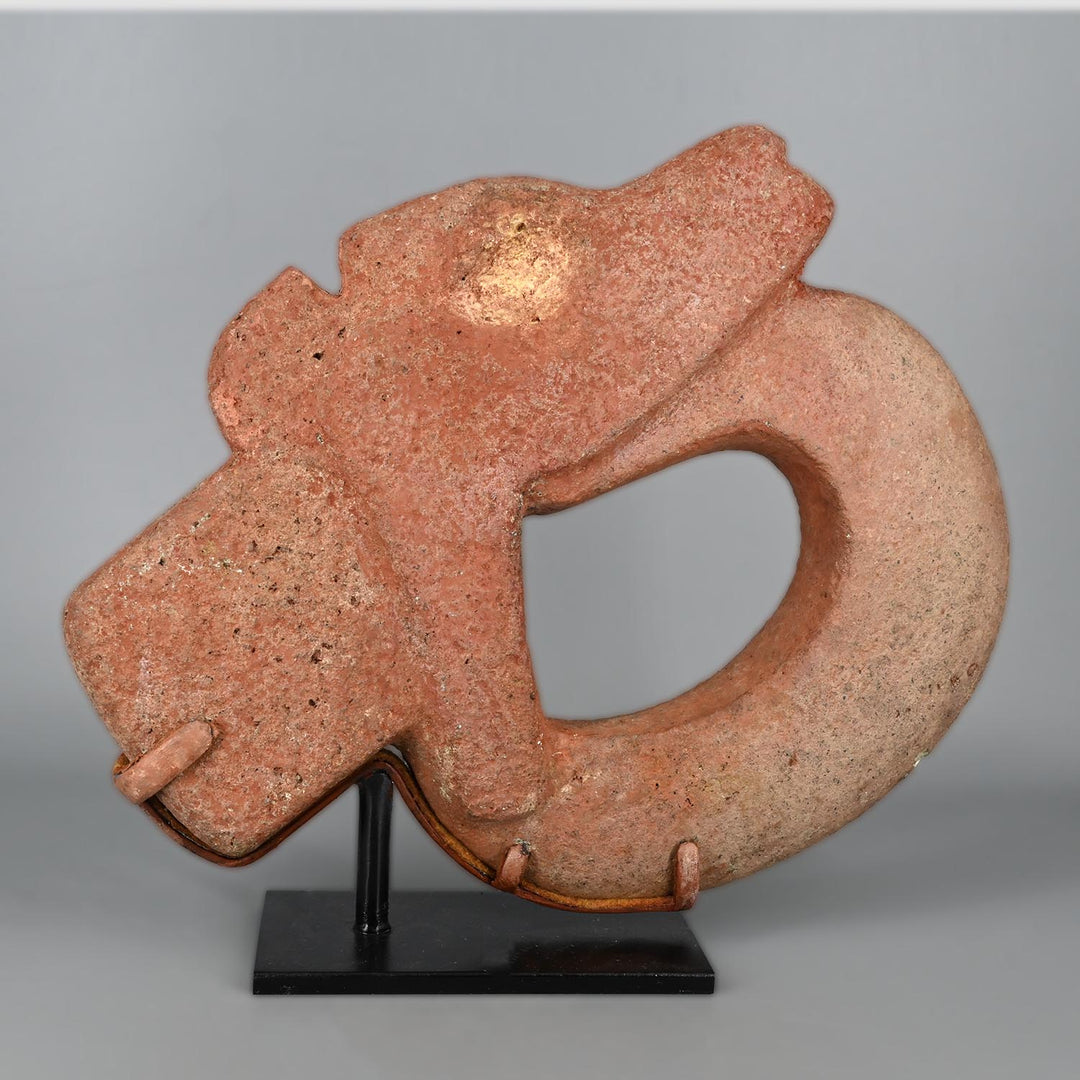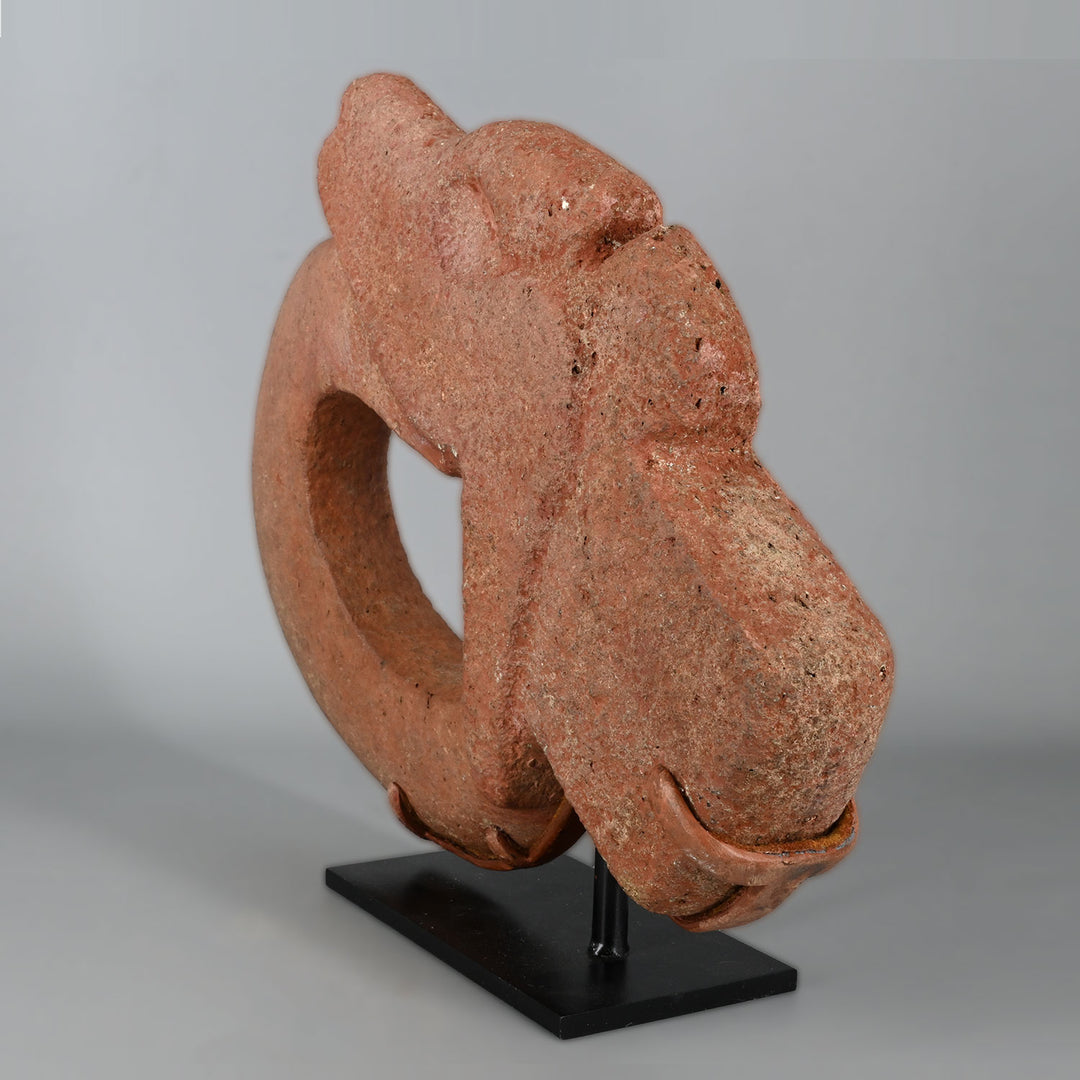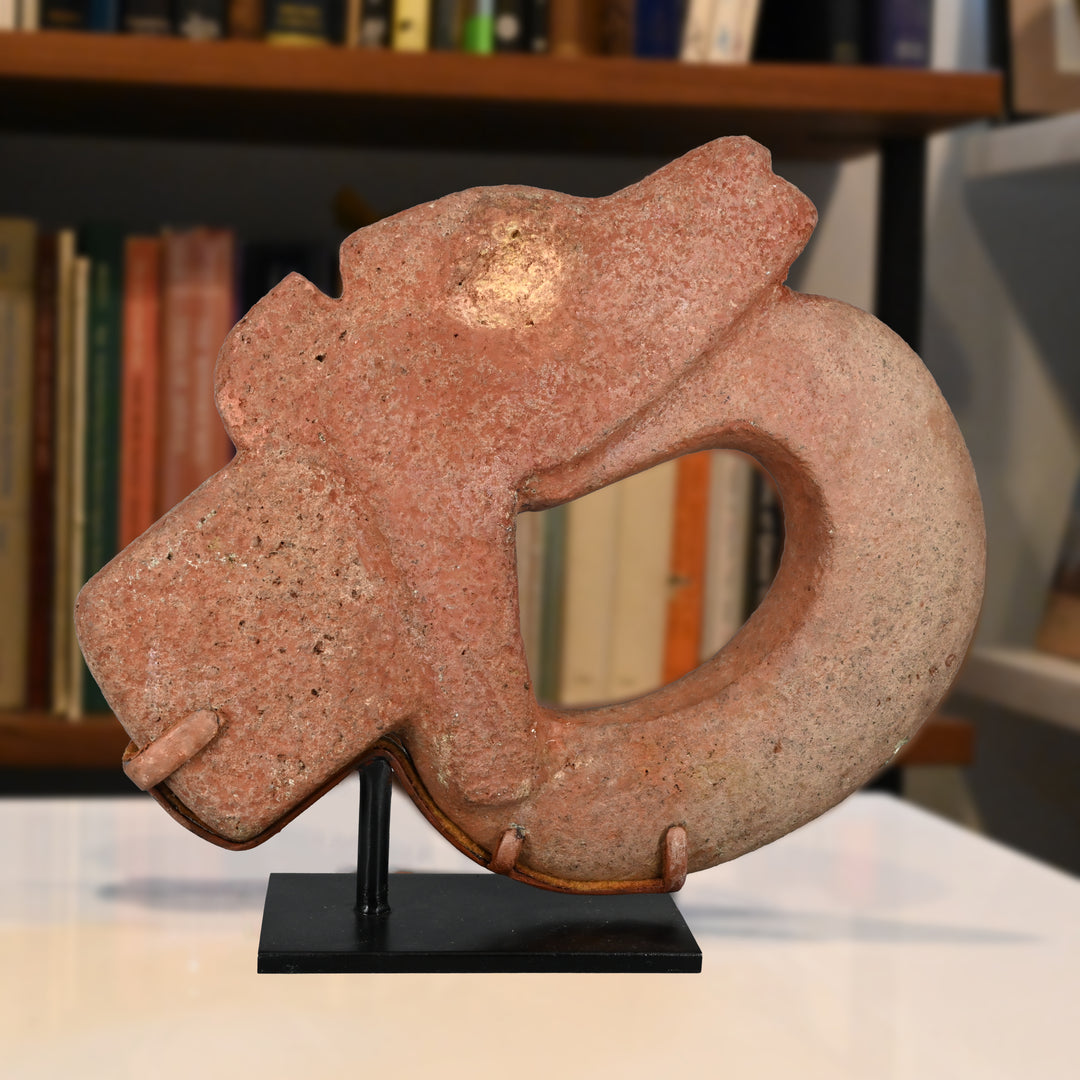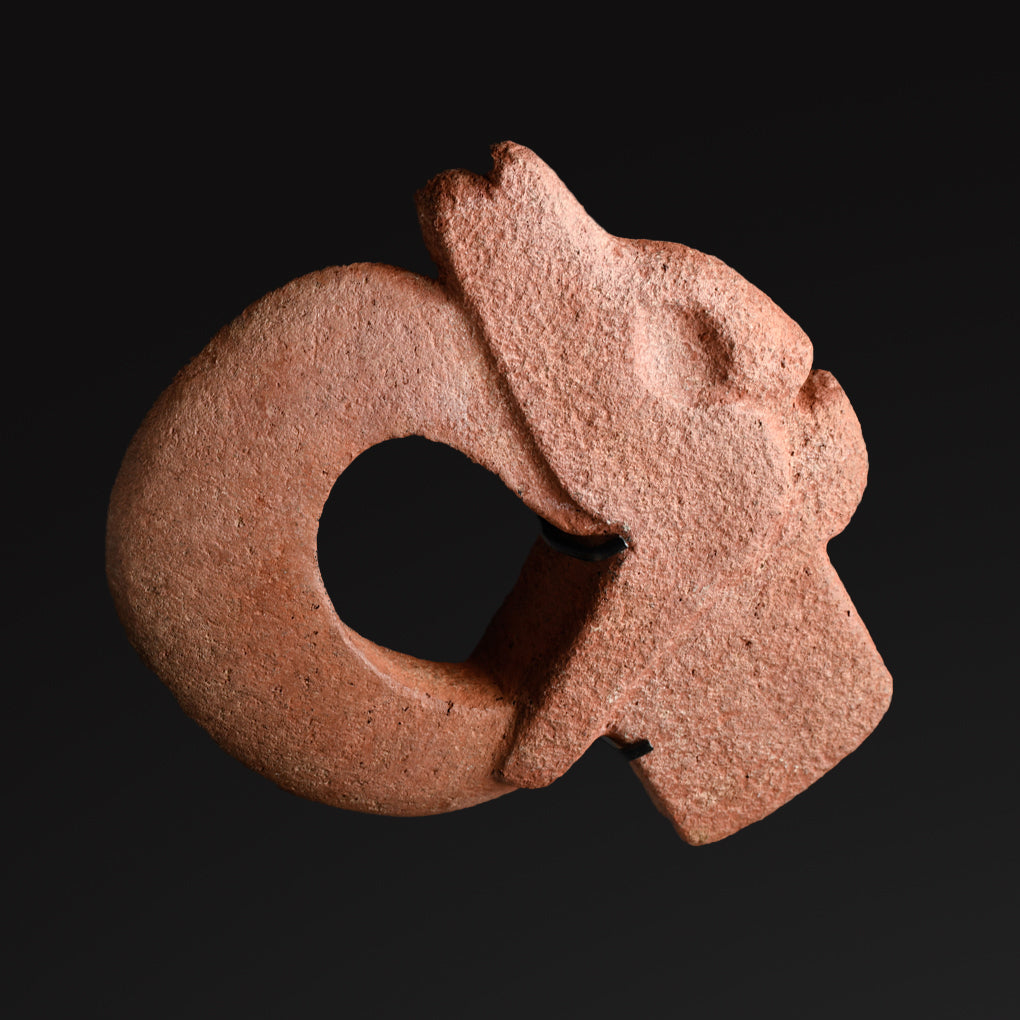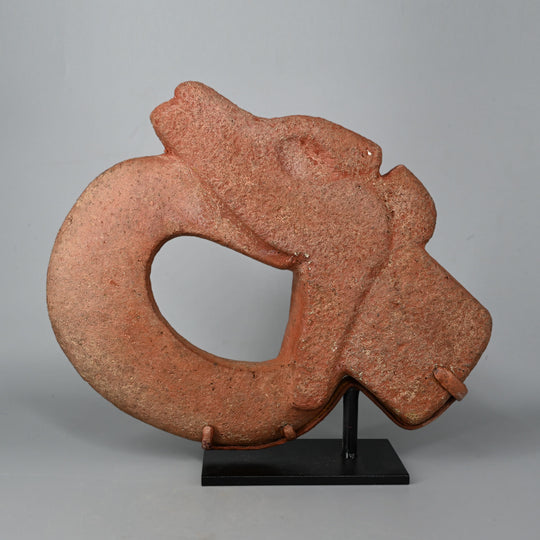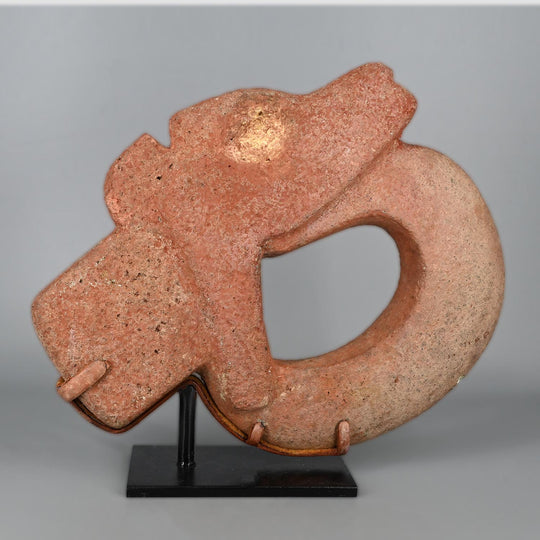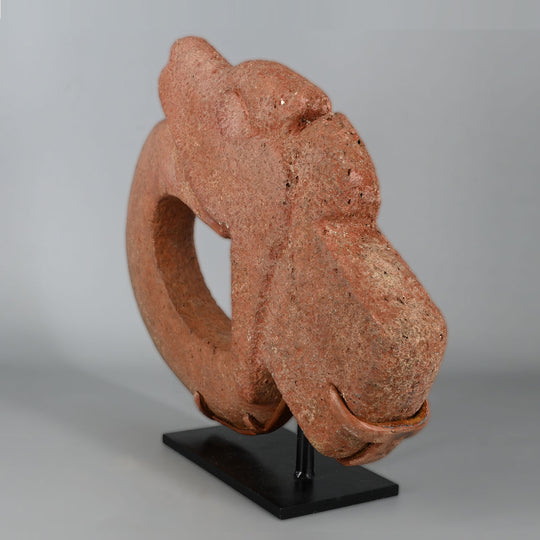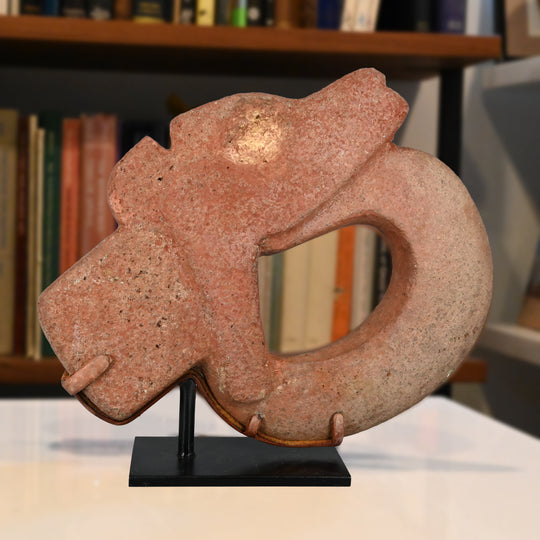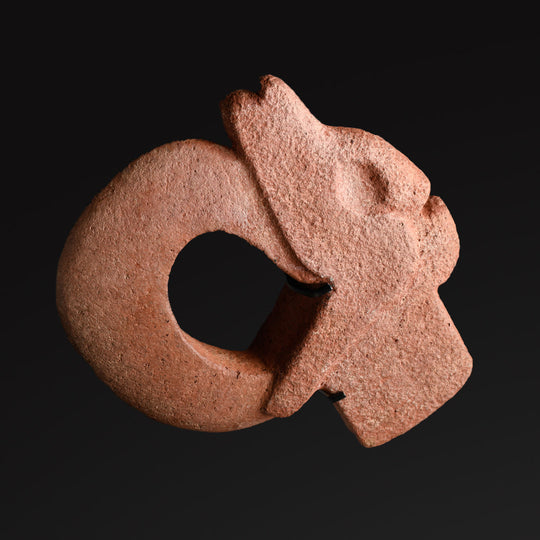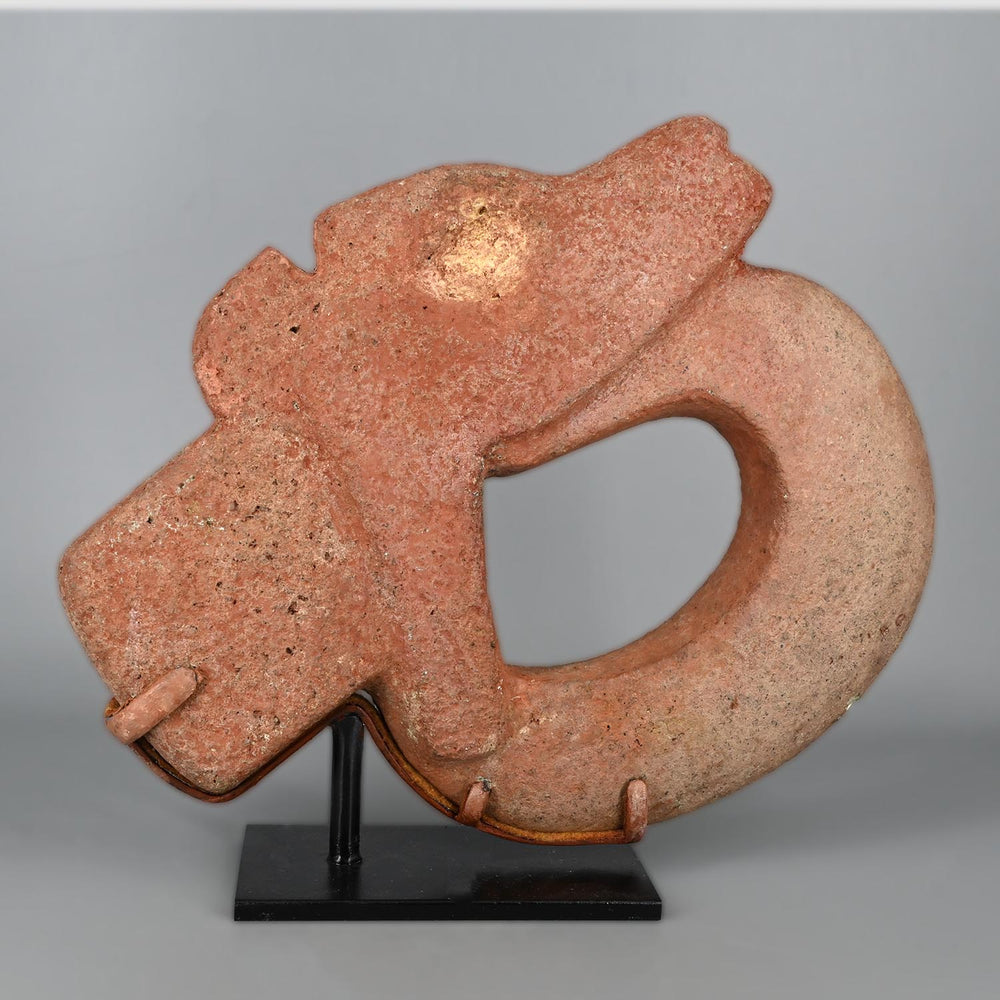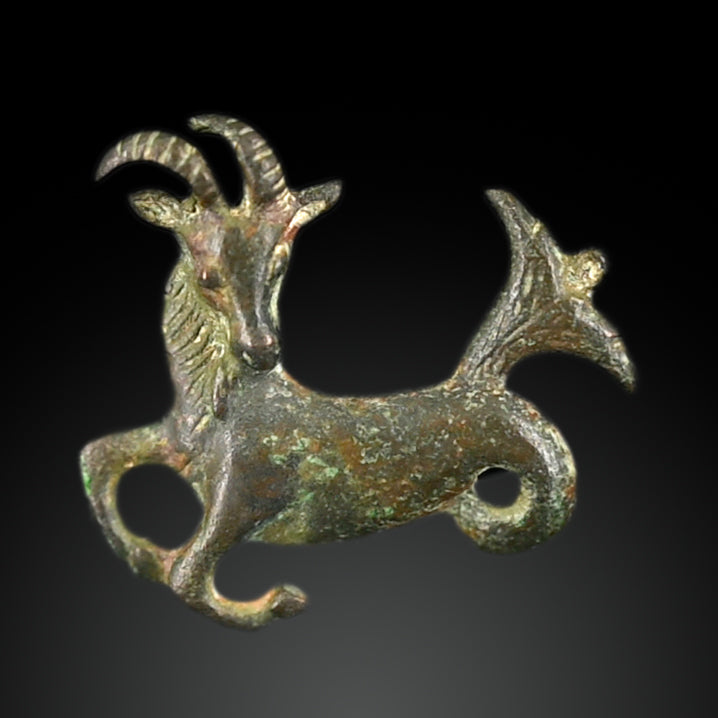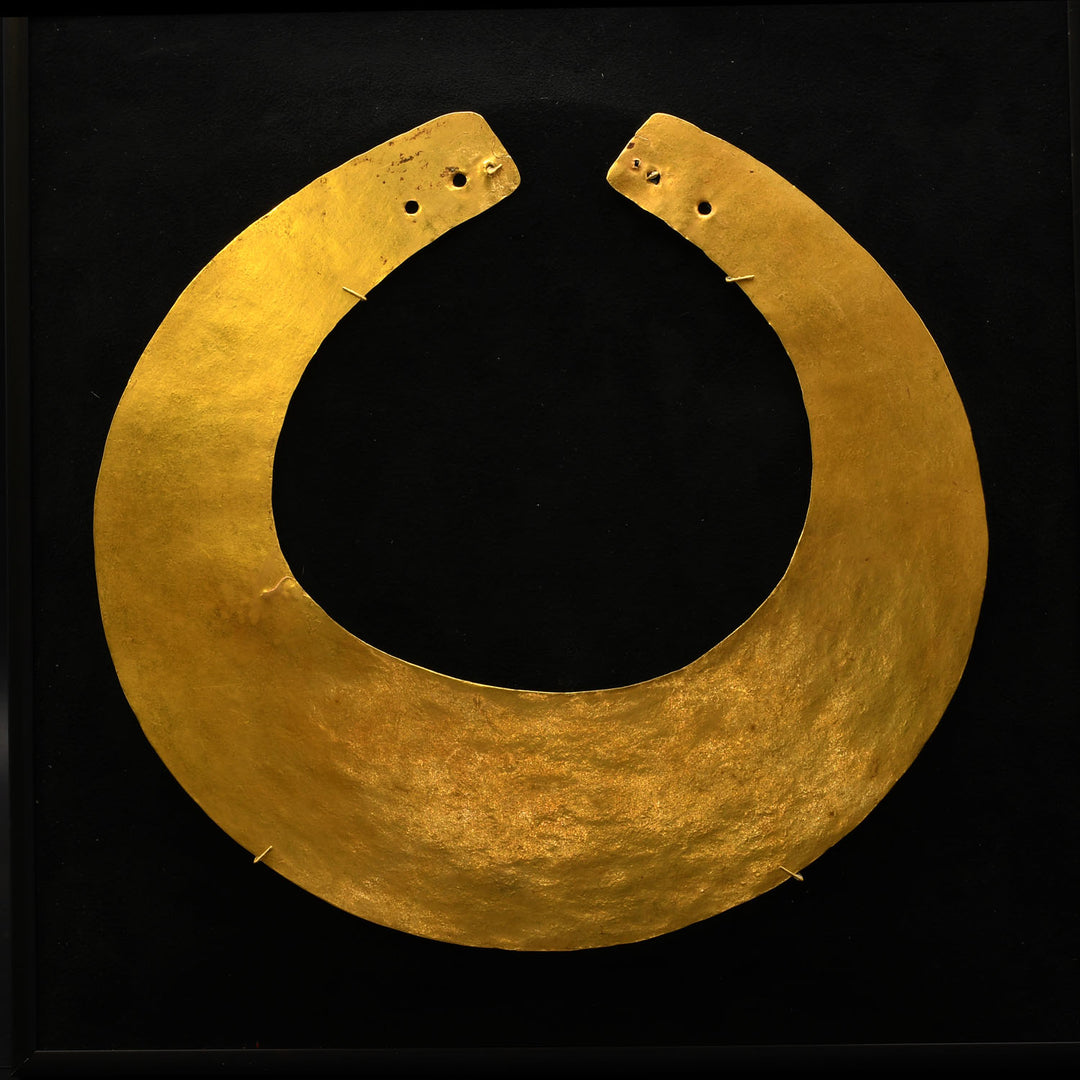Carved from gray volcanic stone and covered in red cinnabar, this fine abstract hacha is carved into a jaguar head in profile with wide-open jaws with a large extended tongue that dominates the hacha, curving downwards from the roof of the mouth to the lower jaw, and is the only part of the stone that is highly polished. A notch at the top of the head implies ears, and another at the tip of the snout indicates a nose.
For a very similar example see: Shook, Edwin M. and Elayne Marquis. Secrets in Stone: Yokes, Hachas and Palmas from Southern Mesoamerica. Philadelphia: American Philosophical Society, 1996, p 138, #J30.
Background: The Mesoamerican ballgame is among the most important and enduring cultural features of the Pre-Columbian world, and its accompanying accoutrements of yokes, hachas, and palmas comprise one of the most important categories of stone sculpture.
From the Spanish word for “axes”, enigmatic stone hachas probably represented ritual effigies of actual ballgame equipment made of lighter and more perishable materials. These ceremonial stone artifacts were evidently of high value, but many questions remain regarding the context in which they were originally used. Recently it has been suggested that some “may well be markers or trophies representing teams or individual players, which were placed on the sides of the ballcourts on certain occasions.” (Helmke, 2018, p. 15).
Some indications of how hachas were used may be discerned from depictions of ballplayers, such as “Toniná Monument 171”, a stone relief sculpture from the Maya site of Toniná, now in the Museo Nacional de Antropología, Mexico City. The sculpture depicts two players on either side of an enormous ball. One contestant stares at his opponent and leans forward to strike the ball with his hacha, which projects from the front of his yoke. The second player, seemingly intently focused on the ball, also wears a yoke and hacha, which is “rendered frontally and thereby seen as a narrow blade along the sternum”, perhaps suggesting that the hacha also had a protective function (Helmke 2018). This iconography also corresponds with a highly dignified Jaina figure of a ballplayer wearing a yoke with an attached bird-head hacha, now in the Yale University Art Gallery, New Haven (inv. no. 1973.88.13; Whittington, 2001, p. 227, cat. no. 100).
In "Secrets in Stone", their comprehensive study of yokes, hachas, and palmas from southern Mesoamerica, Edwin M. Shook and Elayne Marquis identify a corpus of 60 hachas that have a jaguar as their primary motif (Shook 1996, pp. 129-146). The jaguar was an animal of immense importance in the life and religion of the Americas, invoked in warfare, hunting, and the ritual ballgame. As the largest cats in the Americas, with a top speed of 50mph, jaguars are fierce predators, their bite so powerful it can pierce the skull of its prey to kill it instantly.
Jaguar warriors were the most elite military class among the Aztecs, and it was a rank achieved only after defeating several enemies in battle. Warriors—and rulers stressing their military prowess—are depicted wearing jaguar helmets and headdresses. The ritual form of the Mesoamerican ballgame had close associations with both warfare and sacrifice, and jaguar elements were sometimes included in a player’s regalia. A stone hacha in the Met Museum collection of Classic Veracruz style, depicts the head of a ballplayer wearing a jaguar helmet (see MMA 1979.206.371). Among the Classic Maya, only rulers wore jaguar pelts and sat on jaguar thrones.
The conquest of an opposing team, like victory in warfare, resulted in the taking of captives and human sacrifice. The ballgame may have functioned as a political tool and a substitute for warfare as a way of consolidating and expanding territory and tribute (Stern 1949). The bold and assured carving of this hacha, perhaps claims for the game the status of warfare, and for the player, as for the warrior, the fierceness and power of the jaguar.
Resources and Additional Reading
Benson, Elizabeth P. “The Lord, The Ruler, Jaguar Symbolism in the Americas,” in Icons of Power, Feline Symbolism in the Americas, Nicholas J. Saunders, ed., pp. 53-76. London and New York: Routledge, 1998.
Helmke, Yaeger, and Eli, “A Figurative Hacha from Buenavista del Cayo, Belize”, The PARI Journal, Vol. 18, No. 3, 2018, p. 20
Shook, Edwin M. and Elayne Marquis. Secrets in Stone: Yokes, Hachas and Palmas from Southern Mesoamerica. Philadelphia: American Philosophical Society, 1996.
Stern, Theodore. The Rubber-Ball Game of the Americas, Monographs of the American Ethnological Society no.17. New York: J. J. Augustin, 1949.
Whittington, E. Michael ed., The Sport of Life and Death: The Mesoamerican Ballgame, New York, 2001.
Dimensions: Height: 10 1/4 inches (26 cm), Length: 10 inches (25.4 cm)
Condition: Intact and in excellent condition overall. The oxidized remnants of a cream pigment, perhaps pyrite, remain in the right eye.
Provenance: Ex. Dr. David Harner collection, Arkansas, assembled in the 1950s - 1960s, collection #04MY.33.
Dr. David Harner amassed a large collection of Pre-Columbian art, primarily from West Mexico, in the 1950s and 1960s. He authenticated objects for Tom Gilcrease, founder of the Gilcrease Museum in Tulsa, and in the 1970s, made extensive donations of pre-Columbian and Native American ceramics to the Gilcrease Museum. Dr. Harner was pictured in Who’s Who in Indian Relics, second edition, (1968).


